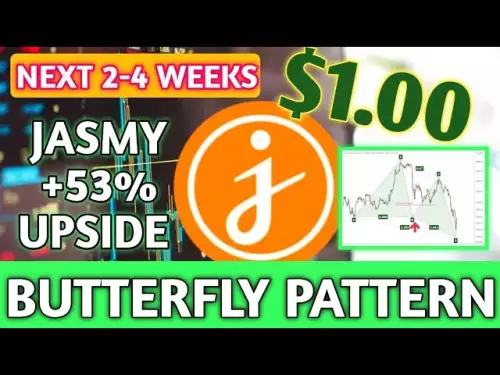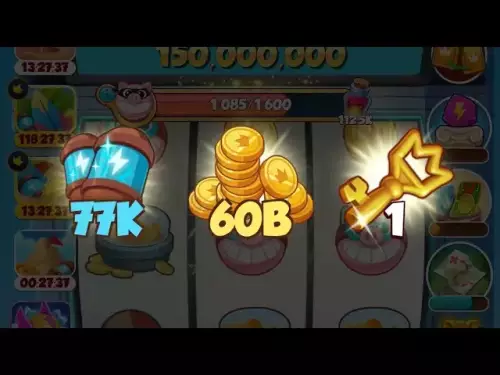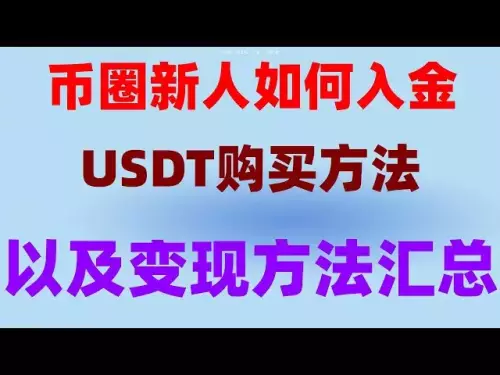-
 Bitcoin
Bitcoin $110300
-1.87% -
 Ethereum
Ethereum $4440
-5.77% -
 XRP
XRP $2.928
-2.35% -
 Tether USDt
Tether USDt $1.000
0.04% -
 BNB
BNB $846.6
-3.56% -
 Solana
Solana $189.5
-7.38% -
 USDC
USDC $0.9999
-0.01% -
 TRON
TRON $0.3451
-3.55% -
 Dogecoin
Dogecoin $0.2120
-6.80% -
 Cardano
Cardano $0.8440
-6.51% -
 Chainlink
Chainlink $23.36
-9.64% -
 Hyperliquid
Hyperliquid $45.37
-0.87% -
 Stellar
Stellar $0.3912
-2.88% -
 Ethena USDe
Ethena USDe $1.001
0.01% -
 Sui
Sui $3.427
-5.42% -
 Bitcoin Cash
Bitcoin Cash $541.9
-6.19% -
 Hedera
Hedera $0.2361
-3.53% -
 Avalanche
Avalanche $23.47
-6.78% -
 UNUS SED LEO
UNUS SED LEO $9.576
-0.13% -
 Litecoin
Litecoin $110.9
-4.17% -
 Toncoin
Toncoin $3.164
-3.92% -
 Shiba Inu
Shiba Inu $0.00001221
-4.42% -
 Uniswap
Uniswap $9.814
-8.21% -
 Polkadot
Polkadot $3.810
-5.78% -
 Cronos
Cronos $0.1600
0.16% -
 Dai
Dai $1.000
0.02% -
 Bitget Token
Bitget Token $4.507
-2.31% -
 Aave
Aave $332.1
-2.83% -
 Monero
Monero $265.5
-3.96% -
 Ethena
Ethena $0.6289
-6.04%
How can VWAP be used to confirm an intraday trend?
VWAP combines price and volume to gauge intraday market trends, acting as dynamic support in uptrends and resistance in downtrends when confirmed by volume and price action.
Aug 04, 2025 at 09:21 pm
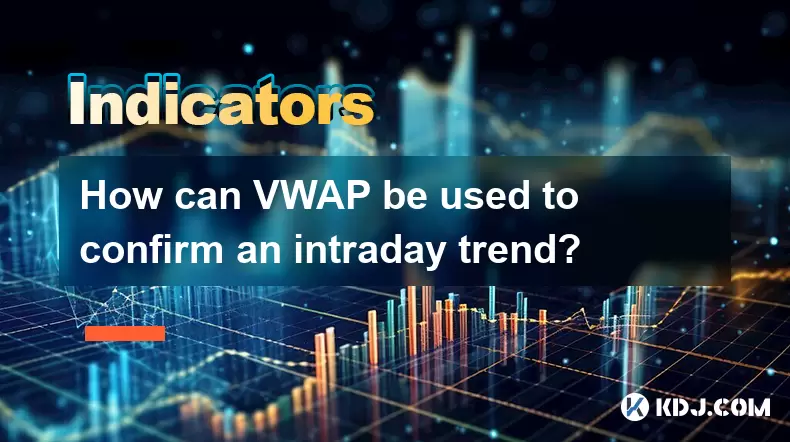
Understanding VWAP and Its Role in Intraday Trading
The Volume Weighted Average Price (VWAP) is a trading benchmark that represents the average price a security has traded at throughout the day, based on both volume and price. It is calculated by multiplying the price of each transaction by the volume of that transaction, summing these values, and then dividing by the total volume for the day. The formula for VWAP is:
VWAP = Σ (Price × Volume) / Σ Volume
This metric is especially useful for intraday traders because it reflects the true average cost of a stock over a trading session. Unlike a simple moving average, which only considers price, VWAP incorporates volume, making it more representative of actual market activity. Institutional traders often use VWAP to execute large orders without significantly impacting the market price, which in turn makes VWAP a reliable indicator of market sentiment.
How VWAP Reflects Market Bias
When the current price is above the VWAP, it suggests that buyers are in control and the market is exhibiting bullish momentum. This condition indicates that trades are being executed at higher prices with significant volume, reinforcing the strength of the uptrend. Conversely, when the price is below the VWAP, sellers dominate, signaling bearish pressure.
The relationship between price and VWAP helps traders assess the directional bias of the market. For example, if a stock opens below VWAP and fails to move above it, the odds favor continued selling pressure. On the other hand, a stock that consistently trades above VWAP, especially with increasing volume, shows sustained buying interest. This dynamic allows traders to use VWAP not just as a price reference, but as a real-time gauge of market strength.
Using Price Relative to VWAP to Confirm Trends
To confirm an intraday trend, traders monitor whether the price remains consistently above or below the VWAP line. A confirmed bullish trend occurs when:
- The price opens above VWAP and remains there
- Each pullback touches but does not close below VWAP
- Volume increases on upward moves and decreases on retracements
In this scenario, VWAP acts as dynamic support. Each time the price dips toward VWAP and bounces, it validates the trend’s strength. Similarly, a bearish trend is confirmed when:
- The price opens below VWAP and stays under it
- Rallies fail to break and hold above VWAP
- Higher volume accompanies downward moves
Here, VWAP functions as resistance. If the price attempts to rise but reverses at or near VWAP, it indicates persistent selling pressure. The consistency of price action relative to VWAP—combined with volume behavior—provides a robust method for trend confirmation.
Integrating VWAP with Price Action and Volume Patterns
To enhance the reliability of VWAP-based trend confirmation, traders combine it with candlestick patterns and volume analysis. For instance, a bullish engulfing pattern forming near VWAP with a spike in volume strengthens the case for a long entry in an uptrend. Conversely, a bearish pin bar at VWAP with heavy volume in a downtrend supports a short position.
Traders also watch for VWAP retests. After a breakout above VWAP, a return to the VWAP level with minimal selling pressure often presents a low-risk entry point. The key is ensuring that volume on the retest is lower than during the initial breakout, indicating lack of selling conviction.
Additionally, divergences between price and VWAP can signal weakening trends. If the price makes a new high but VWAP fails to rise proportionally, it suggests that the rally is occurring on declining volume—potentially a sign of exhaustion.
Setting Up VWAP on Trading Platforms
Most modern trading platforms, such as TradingView, Thinkorswim, and MetaTrader, offer VWAP as a built-in indicator. To apply it:
- Open the chart of the desired security
- Click on the "Indicators" or "Studies" button
- Search for "VWAP" in the indicator list
- Select it and add to the chart
Some platforms allow customization, such as resetting VWAP at the open of each session or extending it across multiple days. For intraday analysis, ensure the VWAP resets daily. This ensures the calculation reflects only the current trading day’s data. Traders can also overlay standard deviation bands around VWAP to identify overextended moves—though this is optional for trend confirmation.
It’s important to use VWAP on timeframes of 5 minutes or less for intraday trading. Lower timeframes like 1-minute or 3-minute charts provide more granular signals, but noise increases. A 5- or 15-minute chart often offers the best balance between signal clarity and responsiveness.
Common Misinterpretations and How to Avoid Them
One common mistake is treating VWAP as a standalone reversal signal. Price crossing VWAP does not automatically mean a trend reversal. It could simply be a temporary pullback in a strong trend. To avoid false signals:
- Wait for confirmation through candlestick closes beyond VWAP
- Check if volume supports the move
- Look for alignment with higher-timeframe trends
Another error is ignoring the opening auction. During the first 15–30 minutes of trading, volume is often erratic, and VWAP can be skewed. Traders should wait for the market to stabilize before using VWAP for decision-making. Observing price action during the first hour helps determine whether VWAP will act as support, resistance, or a neutral pivot.
Also, avoid using VWAP in low-volume or illiquid stocks. In such cases, the VWAP line may lag or react unpredictably due to sparse trading activity. Focus on high-volume equities or futures contracts like the ES (S&P 500 E-mini) for more reliable VWAP signals.
Frequently Asked Questions
Can VWAP be used in ranging markets?
Yes, in sideways markets, VWAP often acts as a central pivot. Price tends to oscillate around it, offering potential mean-reversion opportunities. Traders can look for short entries when price is significantly above VWAP with overbought indicators, and long entries when price is well below with oversold conditions.
What happens when price and VWAP converge after a strong trend?
When price returns to VWAP after a strong move, it tests the validity of the trend. If price holds and bounces with volume, the trend is likely resuming. If it stalls or reverses with strong opposing volume, the trend may be losing momentum.
Is VWAP effective in pre-market or after-hours trading?
Generally, VWAP is less reliable in pre-market and after-hours sessions due to lower volume and fragmented liquidity. Most traders reset VWAP at the regular market open and only use it during regular trading hours (9:30 AM – 4:00 PM ET).
Should VWAP be combined with other indicators?
Yes, combining VWAP with tools like moving averages, RSI, or MACD improves signal accuracy. For example, a price above VWAP with RSI above 50 reinforces bullish bias, while a crossover below both may signal trend exhaustion.
Disclaimer:info@kdj.com
The information provided is not trading advice. kdj.com does not assume any responsibility for any investments made based on the information provided in this article. Cryptocurrencies are highly volatile and it is highly recommended that you invest with caution after thorough research!
If you believe that the content used on this website infringes your copyright, please contact us immediately (info@kdj.com) and we will delete it promptly.
- Hong Kong Stablecoin Regulations: A New Era for Crypto?
- 2025-08-26 12:50:12
- Blockchain, Crypto, and Finance: Navigating the 2025 Bull Run
- 2025-08-26 13:05:13
- Bukedea School: From Local Hopefuls to East African Football & Beach Volleyball Champs
- 2025-08-26 13:05:13
- Scaramucci, Bitcoin, and a Touch of Romeo & Juliet: A Modern Crypto Romance?
- 2025-08-26 13:25:13
- USDC, USDT, and the Stablecoin Market: A 2025 Overview
- 2025-08-26 13:25:13
- Bitcoin, Holdings, Strategy: Decoding Strategy's Bold Play
- 2025-08-26 13:45:13
Related knowledge
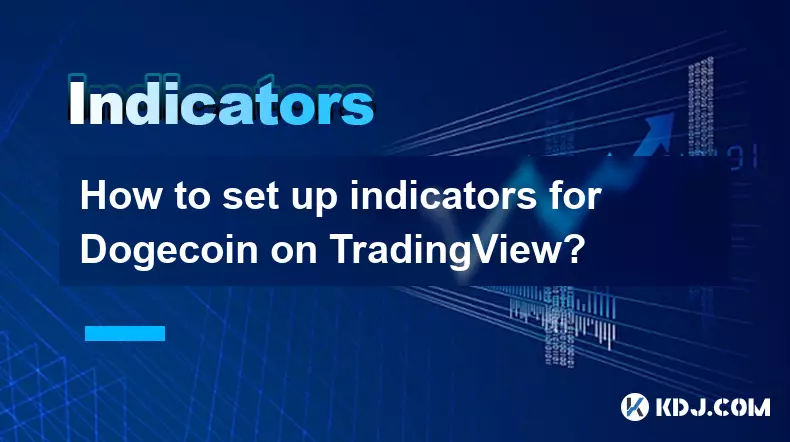
How to set up indicators for Dogecoin on TradingView?
Aug 25,2025 at 04:23pm
Understanding Dogecoin and TradingView1. Dogecoin, initially created as a meme-based cryptocurrency, has evolved into a widely traded digital asset. I...

What does it mean when the +DI and -DI cross frequently in the DMI indicator but the ADX is flattening?
Aug 11,2025 at 03:15am
Understanding the DMI Indicator ComponentsThe Directional Movement Index (DMI) is a technical analysis tool composed of three lines: the +DI (Positive...

What does the sudden appearance of a "dark cloud cover" candlestick pattern during an uptrend indicate?
Aug 13,2025 at 11:35am
Understanding the 'Dark Cloud Cover' Candlestick PatternThe dark cloud cover is a bearish reversal pattern in technical analysis that typically appear...

What does it mean when the moving average, MACD, and RSI all send buy signals simultaneously?
Aug 11,2025 at 01:42pm
Understanding the Convergence of Technical IndicatorsWhen the moving average, MACD, and RSI all generate buy signals at the same time, traders interpr...

What does it mean when both the KDJ indicator and the RSI show overbought signals simultaneously?
Aug 13,2025 at 11:35am
Understanding the KDJ Indicator in Cryptocurrency TradingThe KDJ indicator is a momentum oscillator derived from the Stochastic Oscillator, widely use...

What does it mean when the price is trading above the SAR indicator but the red dots are densely packed?
Aug 09,2025 at 11:49pm
Understanding the SAR Indicator and Its Visual SignalsThe SAR (Parabolic Stop and Reverse) indicator is a technical analysis tool used primarily to de...

How to set up indicators for Dogecoin on TradingView?
Aug 25,2025 at 04:23pm
Understanding Dogecoin and TradingView1. Dogecoin, initially created as a meme-based cryptocurrency, has evolved into a widely traded digital asset. I...

What does it mean when the +DI and -DI cross frequently in the DMI indicator but the ADX is flattening?
Aug 11,2025 at 03:15am
Understanding the DMI Indicator ComponentsThe Directional Movement Index (DMI) is a technical analysis tool composed of three lines: the +DI (Positive...

What does the sudden appearance of a "dark cloud cover" candlestick pattern during an uptrend indicate?
Aug 13,2025 at 11:35am
Understanding the 'Dark Cloud Cover' Candlestick PatternThe dark cloud cover is a bearish reversal pattern in technical analysis that typically appear...

What does it mean when the moving average, MACD, and RSI all send buy signals simultaneously?
Aug 11,2025 at 01:42pm
Understanding the Convergence of Technical IndicatorsWhen the moving average, MACD, and RSI all generate buy signals at the same time, traders interpr...

What does it mean when both the KDJ indicator and the RSI show overbought signals simultaneously?
Aug 13,2025 at 11:35am
Understanding the KDJ Indicator in Cryptocurrency TradingThe KDJ indicator is a momentum oscillator derived from the Stochastic Oscillator, widely use...

What does it mean when the price is trading above the SAR indicator but the red dots are densely packed?
Aug 09,2025 at 11:49pm
Understanding the SAR Indicator and Its Visual SignalsThe SAR (Parabolic Stop and Reverse) indicator is a technical analysis tool used primarily to de...
See all articles





















